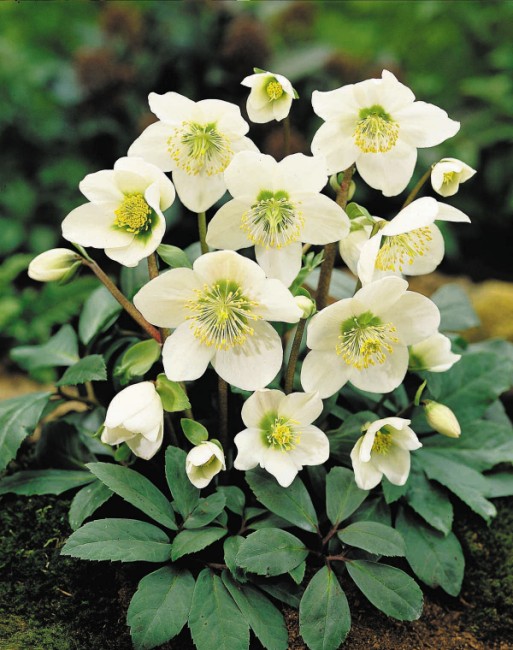Hellebores
It seems being a gardener and a collector go hand in hand. My latest plant interest is Helleborus aka Lenten Rose. Until recently hellebores were not really popular plants, there was concern they wouldn’t survive our Northumberland ON winters and they often had downward facing flowers which were hard to see. In addition they bloom very early and are past their best before most garden centres open.
Hellebores really are great, low maintenance, long lived perennial plants; they have evergreen foliage, bloom very, very early, blooms last for several months and they are deer resistant. Hellebores offer the first major burst of colour at the very start of the gardening season. Plants vary in size but are generally 1.5’x 1.5′
There are about 20 species of Helleborus but the most common are Heleborus niger, Helleborus orientalis and Helleborus x hybridus cvs, the Oriental hybrid hellebores. Recent hybridizing has improved colour range, flower shape and size, foliage and plant vigour. Flowers can be white, green, pink, apricot, purple, yellow or black; some with picotee edging, veining, speckles or spots. Flowers can be single, double, star shaped or an anenome flowered form. Many Hellebores now have outward facing flowers. The palmate leaves can be a smooth dark green, grey green, silver veined or silver and green with red veins. Some have very narrow leaves.
Traditionally Helleborus x hybridus are derived from seed strains because hellebores bulk up slowly and resent division. Hellebore genetics is complicated so no two hellebores derived from a seed strain will be identical. If you purchase a seed strain plant that is not in flower it is impossible to know exactly what you will get.
Some meticulous breeders have worked carefully to provide as much uniformity as possible but still best to buy a plant that is flowering. Tissue culture hellebores are becoming available thus guaranteeing an identical plant.
Hellebores originated in Europe and Asia and are native to woodlands. Plant them under deciduous trees as they prefer partial shade. Some will tolerate full sun or full shade. They like consistent moisture in spring and fall and can tolerate summer drought. Slightly neutral to acidic, well drained soil is best. When planting crowns should be just covered by soil; planting too deep inhibits flowering. Hellebores in containers become root bound so shake off soil before planting.
Hellebores appreciate a yearly application of well rotted manure or compost.Most people remove the past year’s tatty foliage just as buds emerge. Hellebores self sow prolifically so you may want to remove spent flowers. Seedlings can be transplanted but will not be true to parent.
One caveat. All hellebores are poisonous and all parts of the plant are poisonous. This is why deer won’t eat them.

